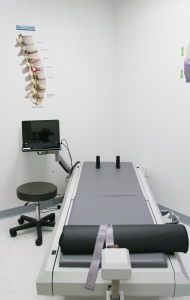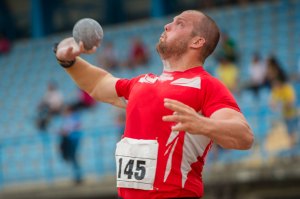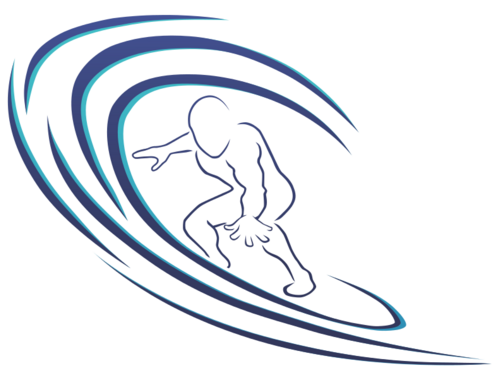 VAX-D
VAX-D
Spinal Decompression
Offered by
 Low back pain is the leading cause of disability in the United States. The medical and socioeconomic burden placed on those with acute or chronic low back pain is immense, with over $50 billion spent on alleviation and treatment (2,7). The practitioners at Pacific Coast Sports Medicine utilize many non-surgical methods to treat spinal disorders. Many times they recommend vertebral axial decompression (VAX-D) to ameliorate symptoms and aid the body’s healing process to recovery.
Low back pain is the leading cause of disability in the United States. The medical and socioeconomic burden placed on those with acute or chronic low back pain is immense, with over $50 billion spent on alleviation and treatment (2,7). The practitioners at Pacific Coast Sports Medicine utilize many non-surgical methods to treat spinal disorders. Many times they recommend vertebral axial decompression (VAX-D) to ameliorate symptoms and aid the body’s healing process to recovery.
VAX-D is a novel piece of technology and form of non-surgical spinal care that has been used since the early 1990s for patients with the following conditions:
- Herniated Disc
- Slipped Vertebra
- Posterior Facet Problems
- Degenerative Disc Disease
- Spinal Nerve Disorders
- Sciatica (4,8)
How does “Spinal Decompression” work and what does a typical session look like?
The therapeutic effects of VAX-D are realized through the vertical expansion—or spinal decompression—between vertebrae. Intradiscal pressure is often the main cause of pain in those with low back conditions due to compressive pressure on the intervertebral discs of the spine. VAX-D allows a release in pressure and an increase in vertebral disc height, thus alleviating back and even leg pain (1).
Treatment protocol typically consists of five 30-minute sessions per week for four weeks, followed by one 30-minute session per week for four weeks. Each session involves 15 cycles of distraction and relaxation with each phase lasting one minute. During the distraction phase of a cycle, the patient experiences slight elongation of the spine in order to release the pressure on the vertebral discs (9). It has been demonstrated that every 1-millimeter increase in disc height is associated with a clinically significant reduction in pain (1).
Clinical findings on the benefits of VAX-D Spinal Decompression include:
- In patients diagnosed with herniated disc, degenerative disc disease, or facet syndrome, VAX-D therapy has resulted in improvements of low back and associated leg pain after treatment (5)
- After 8-weeks of VAX-D treatment, 250 patients with degenerative and/or herniated disc conditions experienced significant improvements from pre-treatment scores in pain intensity and disability (3)
- Compared to TENS Unit therapy which had a 0% success rate, VAX-D demonstrated a 68% success rate in pain reduction and function improvement in patients with chronic low back pain (7)
- In another study comprised of 23 patients with back pain, after four years of therapy, “52% of patients reported a pain level of zero, 91% were able to resume their normal daily activities and 87% were either working or were retired without having back pain as the cause of retirement” (6)
In addition to aiding in pain relief, VAX-D may contribute to the regeneration or healing of the intervertebral disc.
 When vertebrae compress intervertebral discs, nutrient intake is limited causing a buildup of lactic acid and feelings of pain and discomfort. By releasing that pressure, the discs are able to receive nutrients and oxygen, ultimately allowing metabolic processes to occur to remove waste and enable natural healing (9).
When vertebrae compress intervertebral discs, nutrient intake is limited causing a buildup of lactic acid and feelings of pain and discomfort. By releasing that pressure, the discs are able to receive nutrients and oxygen, ultimately allowing metabolic processes to occur to remove waste and enable natural healing (9).
 Pacific Coast Sports Medicine is a clinic that offers safe, research-based treatments in order to achieve maximum outcomes. With a team of qualified medical professionals, patients can rest assured that they will receive a comprehensive approach to their musculoskeletal conditions. VAX-D is one scientifically proven therapy used at Pacific Coast Sports Medicine to treat spinal conditions non-surgically.
Pacific Coast Sports Medicine is a clinic that offers safe, research-based treatments in order to achieve maximum outcomes. With a team of qualified medical professionals, patients can rest assured that they will receive a comprehensive approach to their musculoskeletal conditions. VAX-D is one scientifically proven therapy used at Pacific Coast Sports Medicine to treat spinal conditions non-surgically.
- Apfel et al. Restoration of disk height through non-surgical spinal decompression is associated with decreased discogenic low back pain: a retrospective cohort study. BMC Musculoskelet Discord. 2010;11:155.
- Back Pain Facts & Statistics. American Chiropractic Association Web site. http://www.acatoday.org/level2_css.cfm?T1ID=13&T2ID=68. Accessed March 17, 2015.
- Beattie PF, Nelson RM, Michener LA, Cammarata J, Donley J. Outcomes after a prone lumbar traction protocol for patients with activity-limiting low back pain: a prospective case series study. Arch Phys Med Rehabil. 2008;89(2):269-74.
- Company Profile. VAX-D Web site. http://www.vax-d.com/company-profile. Accessed March 15, 2015.
- Naguszewshi WK, Naguszewski RK, Gose EE. Dermatomal somatosensory evoked potential demonstration of nerve root decompression after VAX-D therapy. Neurol Res. 2001;23(7):706-14.
- Odell Jr. RH, Boudreau D. VAX-D reduces chronic back pain: a four year outcome study. Anesthesiology News. 2003;29(3). PDF from: http://pinhookchiropractic.com/uploads/2011-10-25_VAX-D_Research.pdf, page 17. Accessed March 16, 2015.
- Sherry E, Kitchener P, Smart R. A prospective randomized controlled study of VAX-D and TENS for the treatment of chronic low back pain. Neurol Res. 2001;23(7):780-4.
- Stewart J. Welcome relief for low back pain. CBS HealthWatch by Medscape. PDF from: http://pinhookchiropractic.com/uploads/2011-10-25_VAX-D_Research.pdf, page 27. Accessed March 16, 2015.
- Tilaro F. The treatment of discogenic low back pain: an integrated approach (VAX-D- vertebral axial decompression therapy). Presentation to the McKenzie North American Conference. June 2-4, 2000. http://www.vaxd.com.au/Pages/StudiesPublications/Integrated.html. Accessed March 17, 2015.
